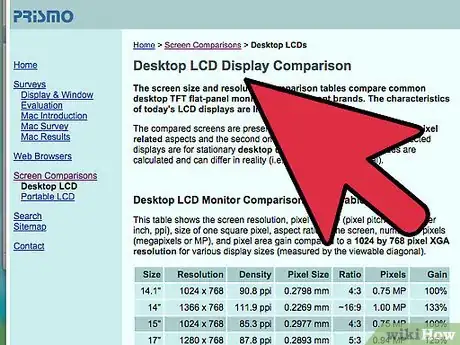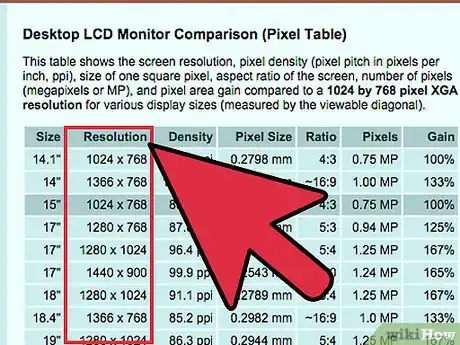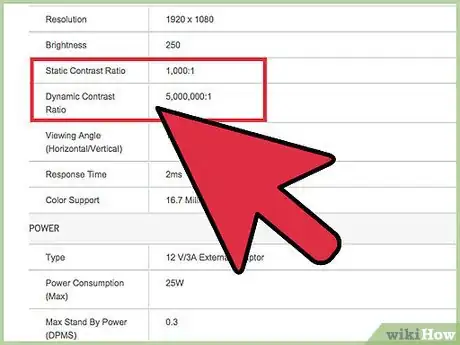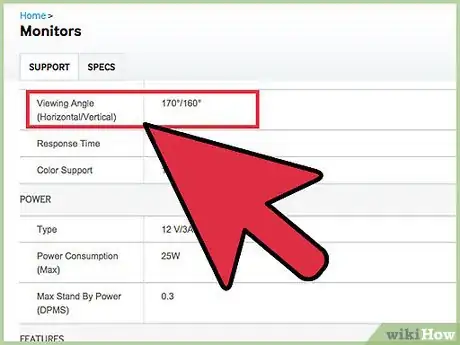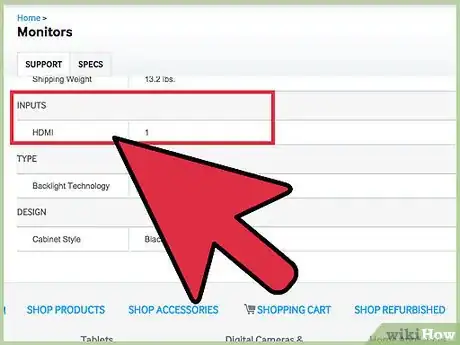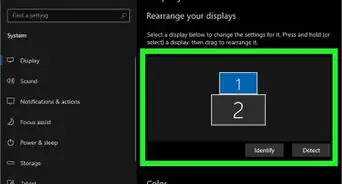X
wikiHow is a “wiki,” similar to Wikipedia, which means that many of our articles are co-written by multiple authors. To create this article, volunteer authors worked to edit and improve it over time.
This article has been viewed 31,613 times.
Learn more...
If you're searching for a new monitor for an existing computer, you'll want to compare LCD monitors before making your choice. Look for a size you can afford and fit in your current workspace, but also consider the technical aspects of an LCD monitor including the screen ratio, resolution, view angles and more.
Steps
-
1Compare LCD monitors by screen size when you begin your search for a new monitor.
- LCD monitors are sold by actual size meaning the real dimensions of the screen are listed as the LCD screen size.
- Consider the space you have available when choosing which size screen you want. The 15 to 19-inch screen LCDs are the most popular, but LCD monitors do come in even larger sizes.
- Find out what the screen ratio is while you look at screen size. Compare LCD monitor's display capabilities as well. Some are sold as the typical 4:3 dimension displays while others now display a wide-screen option just like televisions.
-
2Look at the resolution offered by the LCD monitor.
- The resolution number refers to the highest number of pixels the monitor can display. The higher the resolution number, the better quality picture you'll have on the computer monitor.
- A monitor should also be able to display different resolutions. This standard is called a VGA or SVGA and refers to the different dimensions the monitor is capable of displaying.
Advertisement -
3Watch for the contrast ratio somewhere on the LCD monitor packaging or information pamphlet.
- The contrast ratio is measurement from the brightest to the darkest parts the screen can display. Higher ratios show the LCD monitor will show deep blacks and bright whites better.
-
4View the angles at which the LCD monitor is easily viewable.
- LCD monitors work using pixels which are most easily seen straight on. If the monitor is turned slightly one way or another, viewing will be distorted and washed out. Look for a high rating.
- The angle rating is usually listed in degrees. The optimal, but usually impossible, viewing angle would be 180 degrees. The 180-degree viewing angle would mean the screen could be visible from anywhere in front of it without distortion.
-
5Find an LCD monitor with a higher refresh rate.
- The refresh rate refers to the amount of times the screen will refresh itself to allow for as clear a picture as possible. LCD monitors with a refresh rate in the 70s will show a very clear picture without the presence of flickering caused by slower refresh rates.
-
6Watch out for LCD monitors that don't have the connectors you need to hook up to your current computer.
- The most common LCD connector is the DVI digital connection (white connector).
- Some newer LCD monitors may have an HDMI or DisplayPort connector which is a digital connection that allows for a clearer, brighter picture. The digital connection may not work with very old computers without the proper converter cables.
- Most monitors still carry legacy analog VGA connectors (DSUB-15 or HD15). This is the connector used on older CRT monitor. You will also use this if you use your motherboard's integrated video.
Advertisement
References
About This Article
Advertisement
